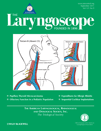Treatment effects of rhBMP-2 on invasiveness of oral carcinoma cell lines†‡§¶
Presented at the 114th Annual Meeting for the Triological Society, Chicago, Illinois, April 29, 2011.
The authors have no financial disclosures for this article.
The authors have no conflicts of interest to disclose.
Funding Sources: NIDCR/NIH Grant DE017137-01A1 and internal research funds from the Department of Otolaryngology—Head & Neck Surgery at Washington University School of Medicine.
Abstract
Objective:
To determine if recombinant human bone morphogenetic protein-2 (rhBMP-2) has biological effects on the invasiveness of human oral squamous cell carcinoma (OSCCA) cell lines.
Study Design:
Laboratory investigation using six human OSCCA cell lines, with three cell lines having baseline gene expression of BMP-2 and three cell lines without baseline gene expression of BMP-2.
Methods:
The invasiveness of each cell line was measured using a matrigel invasion assay with or without stimulation by rhBMP-2. A tumor metastasis quantitative PCR array was used to establish whether observed findings from the invasion assay correlated to changes in gene expression.
Results:
There was a significant increase in tumor cell invasion in response to rhBMP-2 in all BMP-2 positive cell lines but no change in the cell lines that did not express the BMP-2 gene. Quantitative PCR revealed that changes in gene expression were distinctly different based on the baseline gene expression of BMP-2 and favored a more metastatic genotype in the BMP-2-positive cells.
Conclusions:
Recombinant human BMP-2 has an adverse biological effect on invasiveness of human OSCCA cell lines in vitro. This adverse effect is dependent on the baseline gene expression of BMP-2. Changes in expression of genes involved with tumor metastasis correlated to the invasion assay findings. These data raise concern for the safe application of rhBMP-2 for reconstruction of bone defects in oral cancer patients.




